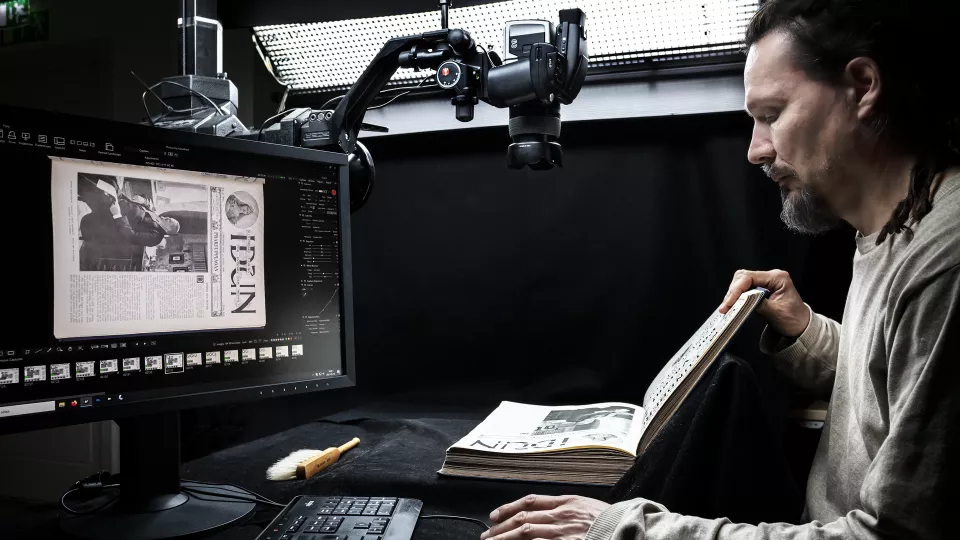The material included in the digitisation comprises books, newspapers, magazines, reports, school books, etc., printed in Sweden. There is already a large amount of digitised material in the various libraries and, for instance, in Litteraturbanken. However, thanks to this collaboration, the libraries can now take a more holistic approach to systematic digitisation and make accessible all Swedish printed material.
It will also be an important resource for our democratic society as everyone will be able to access the material, regardless of where they live.
"Digitising our entire printed cultural heritage and making it openly and easily accessible will be of great use to research and higher education. It will also be an important resource for our democratic society as everyone will be able to access the material, regardless of where they live. It must be easy to find and use Swedish digitised material, whether you are an upper-secondary school pupil, a local historian, a researcher, or a literary scholar," says Lars Ilshammar, Deputy Director of the National Library of Sweden.
Digitising means that printed material is scanned or photographed page by page, and the images are translated into machine-encoded searchable text through an automated process, Optical character recognition (OCR).
The libraries will digitise material from their collections, and the material will appear in Libris, the Swedish national union catalogue. The entire document becomes accessible in full-text on various publishing platforms. One other ambition of the project is to simplify the use of digitised material by using open, linked data.
Our desire is to give the digital material new life and make sure it comes to good use in research
"This is a huge task. Our desire is to give the digital material new life and make sure it comes to good use in research, thanks to the infrastructure of digital material that the libraries will establish. You could go as far as to say that the libraries produce research data when digitising their material and giving them a new range of uses when they can be analysed with new methods."
"This is why it is important to digitise according to international standards and in collaboration with partners specialized in digitisation. International comparison shows that Sweden is lagging when it comes to systematic digitisation. Norway, for instance, and many other European countries are far more advanced." says Lars Burman, Library Director at Uppsala University Library.
Signing a letter of intent initiated the library collaboration in 2020. Since February 2021, Karin Byström from Uppsala University Library has been the project manager.
"The libraries included in the collaborative project produce common standards and decide on what material to start with. The plan is, to begin with, Swedish periodicals from 1850–1900, a material of great interest to both researchers and the general public."
"Additionally, digitisation contributes to reduced wear and tear of physical material where the paper gradually falls apart. The text will be machine-readable through the OCR-interpretation and thus possible to analyse using digital research methods," says project manager Karin Byström.
The project will require additional external funding
The participating libraries initially fund the project, but the project will require additional external funding.
"The ambition is to digitise everything which cannot be done without supplementary funding. This is why we are now trying to find collaborative partners, potentially through non-governmental research foundations as was the case with the newspaper digitisation project headed by the National Library of Sweden and funded by Arcadia," says Mikael Sjögren, Library Director at Umeå University Library. "However, government funding will also be needed and extremely important for this enterprise."
"There is an enormous potential in a digitised, accessible collection, and it is necessary for the libraries to increase the pace of digitisation of Swedish printed materials," concludes Karin Byström.


